Jinzhu Li
Retrieval Augmented Comic Image Generation
Jun 14, 2025Abstract:We present RaCig, a novel system for generating comic-style image sequences with consistent characters and expressive gestures. RaCig addresses two key challenges: (1) maintaining character identity and costume consistency across frames, and (2) producing diverse and vivid character gestures. Our approach integrates a retrieval-based character assignment module, which aligns characters in textual prompts with reference images, and a regional character injection mechanism that embeds character features into specified image regions. Experimental results demonstrate that RaCig effectively generates engaging comic narratives with coherent characters and dynamic interactions. The source code will be publicly available to support further research in this area.
An Investigation of Noise Robustness for Flow-Matching-Based Zero-Shot TTS
Jun 09, 2024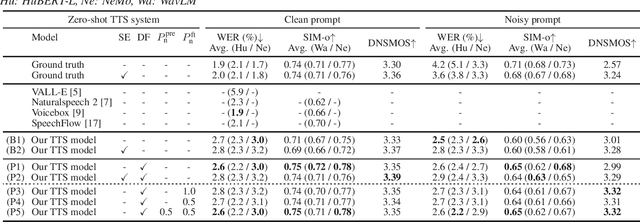
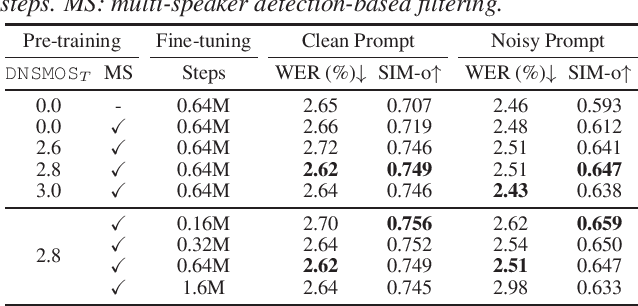
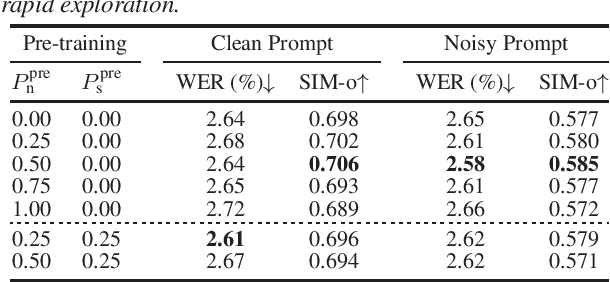
Abstract:Recently, zero-shot text-to-speech (TTS) systems, capable of synthesizing any speaker's voice from a short audio prompt, have made rapid advancements. However, the quality of the generated speech significantly deteriorates when the audio prompt contains noise, and limited research has been conducted to address this issue. In this paper, we explored various strategies to enhance the quality of audio generated from noisy audio prompts within the context of flow-matching-based zero-shot TTS. Our investigation includes comprehensive training strategies: unsupervised pre-training with masked speech denoising, multi-speaker detection and DNSMOS-based data filtering on the pre-training data, and fine-tuning with random noise mixing. The results of our experiments demonstrate significant improvements in intelligibility, speaker similarity, and overall audio quality compared to the approach of applying speech enhancement to the audio prompt.
Making Flow-Matching-Based Zero-Shot Text-to-Speech Laugh as You Like
Feb 12, 2024Abstract:Laughter is one of the most expressive and natural aspects of human speech, conveying emotions, social cues, and humor. However, most text-to-speech (TTS) systems lack the ability to produce realistic and appropriate laughter sounds, limiting their applications and user experience. While there have been prior works to generate natural laughter, they fell short in terms of controlling the timing and variety of the laughter to be generated. In this work, we propose ELaTE, a zero-shot TTS that can generate natural laughing speech of any speaker based on a short audio prompt with precise control of laughter timing and expression. Specifically, ELaTE works on the audio prompt to mimic the voice characteristic, the text prompt to indicate the contents of the generated speech, and the input to control the laughter expression, which can be either the start and end times of laughter, or the additional audio prompt that contains laughter to be mimicked. We develop our model based on the foundation of conditional flow-matching-based zero-shot TTS, and fine-tune it with frame-level representation from a laughter detector as additional conditioning. With a simple scheme to mix small-scale laughter-conditioned data with large-scale pre-training data, we demonstrate that a pre-trained zero-shot TTS model can be readily fine-tuned to generate natural laughter with precise controllability, without losing any quality of the pre-trained zero-shot TTS model. Through the evaluations, we show that ELaTE can generate laughing speech with significantly higher quality and controllability compared to conventional models. See https://aka.ms/elate/ for demo samples.
DelightfulTTS: The Microsoft Speech Synthesis System for Blizzard Challenge 2021
Nov 19, 2021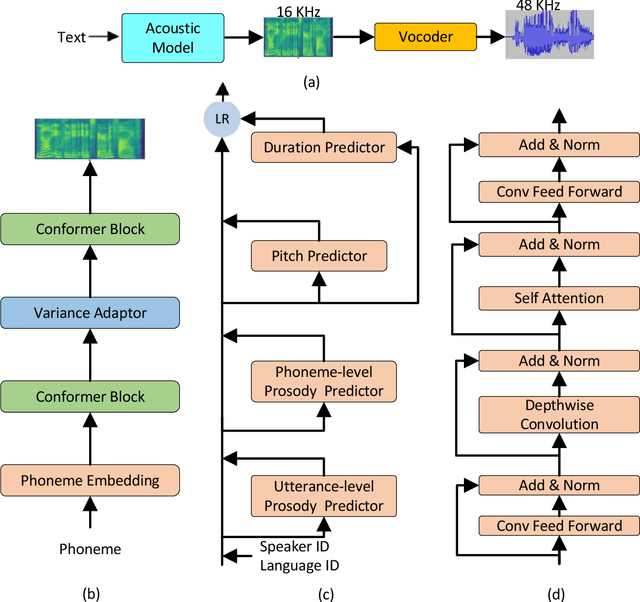
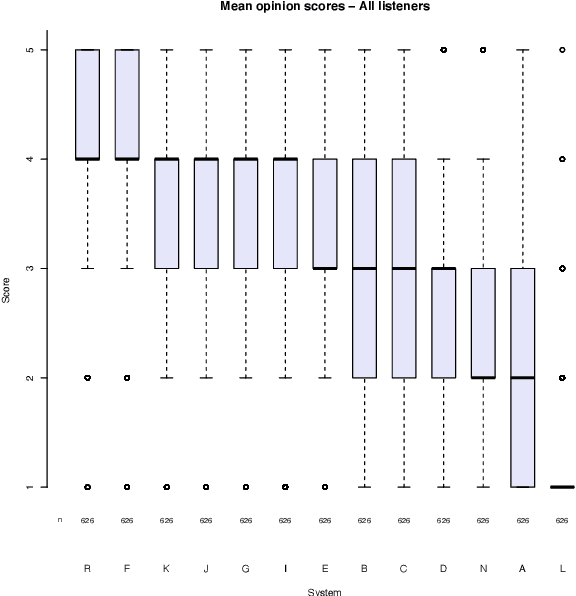
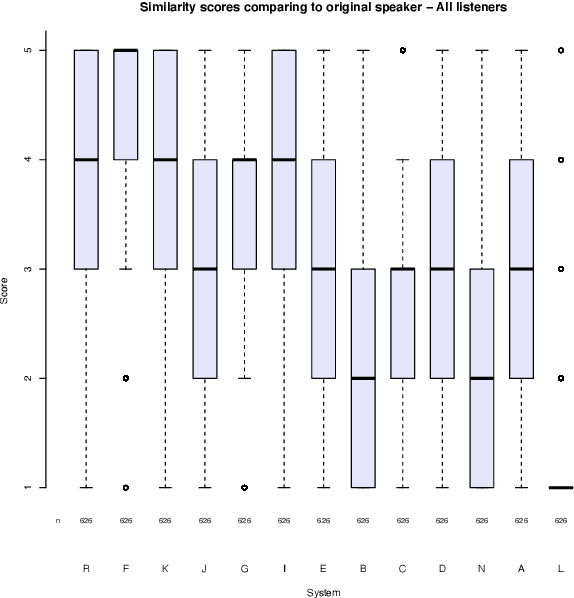
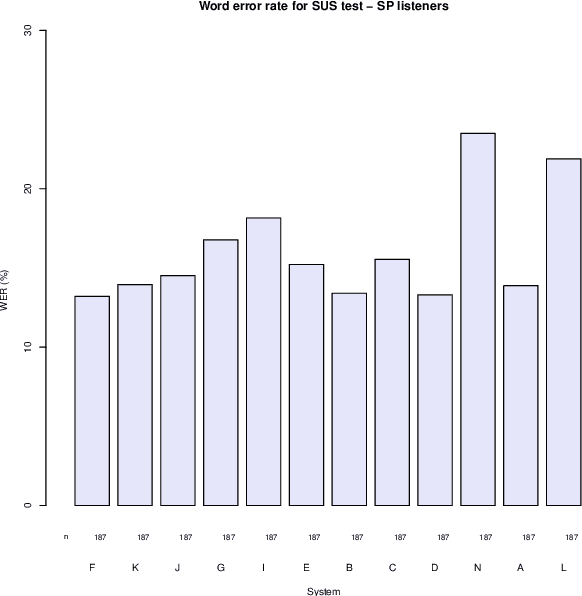
Abstract:This paper describes the Microsoft end-to-end neural text to speech (TTS) system: DelightfulTTS for Blizzard Challenge 2021. The goal of this challenge is to synthesize natural and high-quality speech from text, and we approach this goal in two perspectives: The first is to directly model and generate waveform in 48 kHz sampling rate, which brings higher perception quality than previous systems with 16 kHz or 24 kHz sampling rate; The second is to model the variation information in speech through a systematic design, which improves the prosody and naturalness. Specifically, for 48 kHz modeling, we predict 16 kHz mel-spectrogram in acoustic model, and propose a vocoder called HiFiNet to directly generate 48 kHz waveform from predicted 16 kHz mel-spectrogram, which can better trade off training efficiency, modelling stability and voice quality. We model variation information systematically from both explicit (speaker ID, language ID, pitch and duration) and implicit (utterance-level and phoneme-level prosody) perspectives: 1) For speaker and language ID, we use lookup embedding in training and inference; 2) For pitch and duration, we extract the values from paired text-speech data in training and use two predictors to predict the values in inference; 3) For utterance-level and phoneme-level prosody, we use two reference encoders to extract the values in training, and use two separate predictors to predict the values in inference. Additionally, we introduce an improved Conformer block to better model the local and global dependency in acoustic model. For task SH1, DelightfulTTS achieves 4.17 mean score in MOS test and 4.35 in SMOS test, which indicates the effectiveness of our proposed system
LightSpeech: Lightweight and Fast Text to Speech with Neural Architecture Search
Feb 08, 2021



Abstract:Text to speech (TTS) has been broadly used to synthesize natural and intelligible speech in different scenarios. Deploying TTS in various end devices such as mobile phones or embedded devices requires extremely small memory usage and inference latency. While non-autoregressive TTS models such as FastSpeech have achieved significantly faster inference speed than autoregressive models, their model size and inference latency are still large for the deployment in resource constrained devices. In this paper, we propose LightSpeech, which leverages neural architecture search~(NAS) to automatically design more lightweight and efficient models based on FastSpeech. We first profile the components of current FastSpeech model and carefully design a novel search space containing various lightweight and potentially effective architectures. Then NAS is utilized to automatically discover well performing architectures within the search space. Experiments show that the model discovered by our method achieves 15x model compression ratio and 6.5x inference speedup on CPU with on par voice quality. Audio demos are provided at https://speechresearch.github.io/lightspeech.
 Add to Chrome
Add to Chrome Add to Firefox
Add to Firefox Add to Edge
Add to Edge